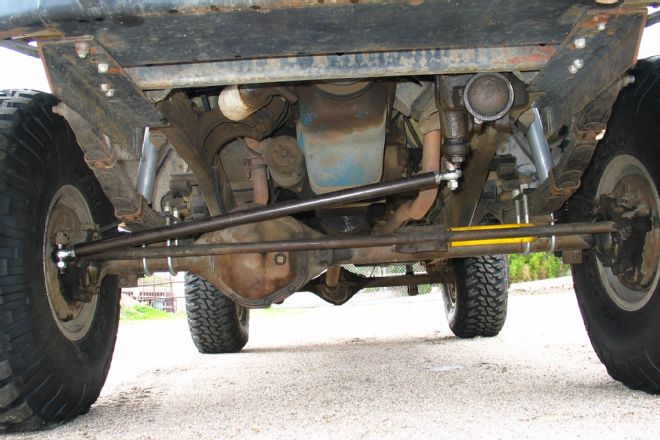
 John Cappa
Former Editor, Four Wheeler
John Cappa
Former Editor, Four Wheeler
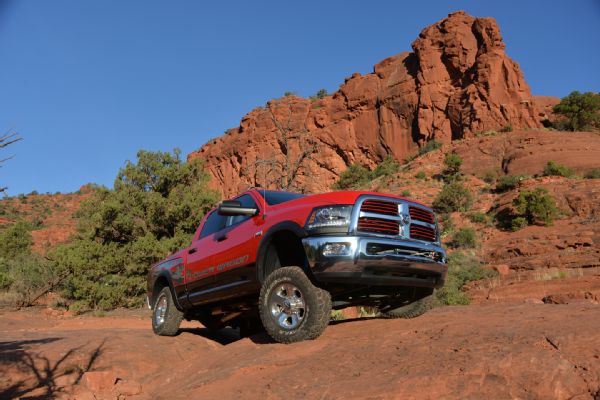
Low Payload Power Wagon
I always enjoy reading what you write, and I hope you can help me find the correct answer to payload on a new Ram Power Wagon. After doing some research, I was told that if I order a Tradesman-based Power Wagon, I can get about 3,000 pounds of payload, which is the same as the Tradesman 2500. The dealer has some paperwork showing the one we wanted to buy having a 3,198-pound payload, but the door jamb on that truck and others we have seen only shows about a 1,500-pound payload, which is about the same as the ’14 Ram 1500 currently carrying our Four Wheel Camper. Since we bought the Four Wheel Camper because it can be taken on real 4x4 routes and find we need a truck with more carrying capacity, ground clearance, and the other neat features of a Power Wagon, we want to get one but after calls and emails from us and even the dealers, we haven’t been able to make sure it is possible to get a Power Wagon rated any higher than our 1/2-ton Ram 4x4 truck. Can it really be true that a 2500 Power Wagon, even in the more work-rated Tradesman model, doesn’t have a higher payload than 1,500 pounds? I hope you can help get an answer to my question. We can’t believe that a much more heavy-duty truck has almost exactly the same payload as a much less stout 1/2-ton truck.
Loro Paterson
Via email
The manufacturer published payload and towing capacities of pickups can be extremely complicated, confusing, and downright unnerving when trying to select a truck that meets your needs. This is especially true when you find a pickup like the Ram Power Wagon that checks all of your boxes but one. I’ll try to provide a little insight as to why the ratings between truck models vary, and hopefully that will help you make an educated choice on what model truck works best for you.
Typically, a truck such as the Ram 2500 will have a base payload rating. As you change the engine, cab configuration, bed length, and add options like a side steps, a plusher interior, larger fuel tank, bigger wheels and tires, and so on, you add weight to the vehicle. That added weight is in turn deducted from the payload capacity of the truck. The GVWR of the truck remains the same, but the weight of the options suck up some of that available payload capacity. Even something as simple as checking the power seat box on your order form can alter the maximum payload capacity of your selected truck. The Ram Trucks website does have a towing and payload calculator function, but unfortunately it isn’t very accurate. Many of the numbers, options, and images are simply incorrect. The ’16 Ram Power Wagon has a published payload capacity of 1,510 pounds. The actual payload capacity will depend on what options and trim level you select. The easiest way to find out the payload capacity of a particular Ram 2500 or Power Wagon is to simply open the driver door and look at the sticker in the doorjamb. By comparison, most ’16 4x4 Ram 1500s have a payload capacity of around 1,300 to 1,700 pounds, depending on engine, transmission, cab configuration, bed length, and other options.
Now, why is the Power Wagon rated at less than a standard 3/4-ton Ram 2500 and about equal to the 1/2-ton Ram 1500? That’s the easy part. Even though the Power Wagon and Ram 2500 share the same 3/4-ton platform and many components, the two trucks were designed for different purposes. The Power Wagon is not simply a Ram 2500. The primary purpose of a standard Ram 2500 is hauling, where the Ram Power Wagon is designed for off-road capability. The Power Wagon has many features that make it the most capable factory pickup ever offered. These features include a winch, front and rear selectable lockers, an electronic disconnecting sway bar, aggressive tires, and most importantly, a tuned suspension among other things. The winch, larger tires and wheels, and other off-road accoutrements add a significant amount of weight to the vehicle. Again, this additional weight alters the payload capacity. Also, the Power Wagon suspension is specifically designed to be pliant and flexible off-road, a characteristic that is not desired when hauling heavy loads. Among other things, the front suspension features the Power Wagon specific Articulink. These added links on the Power Wagon radius arms improve suspension articulation where the solid Ram 2500 radius arms would be more rigid and stable under loads.
Interestingly enough, you can never find a shortage of people that brag about how much they overload their pickups. Very few of us have taken the payload and towing capacities seriously, and rightfully so. Up until only recently, each truck manufacturer had its own arbitrary idea of how a pickup should be rated. Fortunately, Ram Truck is one of the few manufacturers to adopt the SAE J2807 standard across the entire line of 1/2-, 3/4-, and 1-ton pickup trucks. The other OEs are slowly headed in that same direction. This industry change will help provide a more level playing field to make equal comparisons between truck brands and models in the future.
Anyway, all Four Wheel (fourwh.com) pop-up campers are made with an aluminum frame and designed to be taken off-road. Even the largest Four Wheel campers weigh less than 1,000 pounds. So based on that, you shouldn’t have any concerns. Ultimately, the 3/4-ton powertrain will be much more durable than the 1/2-ton powertrain in your current truck.
If you plan to really load the truck down with other gear aside from the camper, and are genuinely concerned about payload capacity, you may consider going with the traditional Ram 2500, or any other model 3/4-ton. You can then add bigger tires, a winch, and lockers and pretend it doesn’t affect your payload capacity because they are aftermarket parts. But you’re only fooling yourself. Either way, the results are the same, you could potentially overload the vehicle. Overloaded pickups are not uncommon, but the manufacturer doesn’t recommend it.
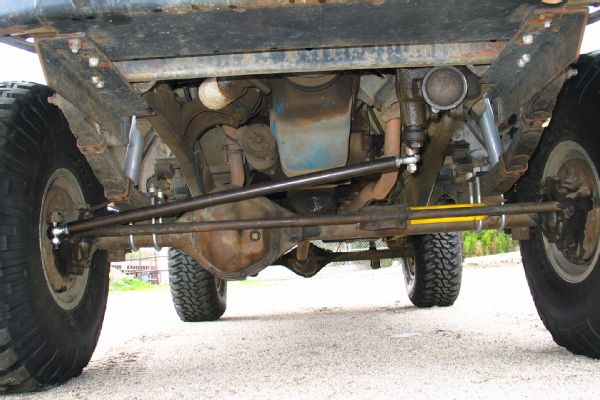
FSJ Death Wobble
I have done a few axle swaps with good driving ability but never with a closed-knuckle Dana 44 on a ’72 J-4000. I installed a 6-inch Alcan lift on the truck. It had a little death wobble before, but the lift amplified it significantly. I wanted to set the caster by moving the spring perches. I believe the caster should be around negative 5 degrees, but where do you put the angle finder on a closed-knuckle axle? After realizing the axle was well worn, I decided to swap in a ’79 Dodge open-knuckle Dana 44. I installed new Dana ball joints and used 3/4-inch rod ends for steering. I also went with a high-steer arm and a flattop knuckle on the right side. It turns and stops good, but the truck still has death wobble. I figure it's the steering box. It doesn’t leak, but it does look like the sector shaft wobbles. I can't see any cracks on the frame. Have you ever seen this before? The master cylinder is from a ’99 Dodge Ram, as is the power steering pump. I wonder if I need a track bar now because the leaf springs have so much arch that they can sway side to side. The steering box that's on the truck provides 2 1/2 turns lock-to-lock.
Mark Swoboda
Via facebook.com/JohnCappa4x4
The violent uncontrollable shaking of the steering, often called death wobble, is generally caused by worn, loose, or improperly fit steering and suspension components. Incorrect caster can make the problem worse, but it’s usually not the main cause of death wobble. Measuring caster on a closed-knuckle Dana axle can be done by placing an angle finder on top of the knuckle bearing cap bolts. In most cases you’ll want around 5 degrees of positive caster (top of the knuckles tilted rearward). Tilting the knuckles forward for negative caster will cause the front tires to wander and keep the steering system from returning to center when you let go of the steering wheel.
The open-knuckle Dana 44 is a good affordable swap choice. It will turn a lot sharper than the closed-knuckle Dana axles. If your steering box has any slop at all, it will need to be replaced. Worn or loose draglink ends are also a common cause for death wobble on a leaf-sprung suspension. I have also seen pitman arms come loose on the splined tapered steering box sector shaft. Make sure yours is tight and not wiggling. In most cases, you shouldn’t have to fabricate a track bar for the front of your leaf-sprung 4x4. Adding a track bar can lead to other issues if not done properly. If you get to the point you are sure all of the steering and suspension components are in good shape and your truck still has death wobble, you can install a steering stabilizer, but that should be the last thing on the list. You don’t want to try and mask some other issue with a steering stabilizer. In some cases there simply is no other solution. I have built several vehicles with all-new components that, for whatever reason, I could not chase the wobble out of. A single steering stabilizer solved the problem on these vehicles. Every FSJ I have ever owned, regardless of new steering parts or not, has always needed at least a single small steering stabilizer. Something about them is wacky. They almost all came with a small factory stabilizer.
Grand Case Swap
I have a ’04 Jeep Grand Cherokee with a V-8 and a full-time 4x4 transfer case. I think it’s an NV247. I had to replace the engine with a remanufactured Jasper engine. Eventually, I want to replace the transfer case. Should I go with a simple stock replacement or an NV242? What would you recommend?
Jeff Lavey
Via facebook.com/JohnCappa4x4
The ’99-’04 V-8–powered Jeep Grand Cherokee came with the NV247 transfer case. On a stock vehicle, it’s a perfectly useable transfer case. If you plan to keep the Jeep mostly stock, then a factory replacement would be the best option when the viscous coupler in the NV247 transfer case eventually wears out. Companies such as Rockland Standard Gear (rsgear.com) offer rebuilt transfer cases for the Grand Cherokee as well as many other 4x4 vehicles. If you plan to extensively modify your Grand with a lift kit, larger tires, and other modifications, it would be a good idea to upgrade the transfer case too. The part-time NV231 is a little more durable than the NV247 and NV242. The NV231 also has an abundance of aftermarket parts available to make it more off-road friendly. The only bummer is that you’ll be sacrificing the full-time feature, which is nice to have on slick wintery roads. A swap such as this will require modification of the shift linkage among other things. It is not a direct bolt-in swap, but it’s pretty close.
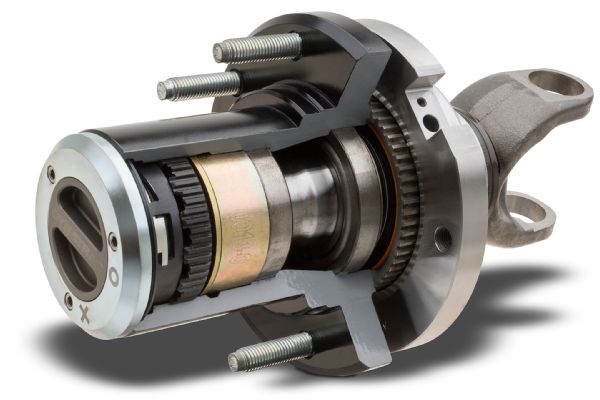
Super Duty Spinning
The front hub bearings are bad in my ’04 Ford F-250 Super Duty diesel crew-cab 4x4. I read “Fixing Factory Mistakes - 1999-2004 Ford” at fourwheeler.com regarding the front unit bearings. The fix was the Dynatrac Free-Spin kit with locking hubs. I'm very limited on money, and the Dynatrac Free-Spin kit is very expensive. Can you recommend something a little less expensive that will still get the job done? I only use 4x4 during snow storms.
Jan Cerra
Via email
The factory unit bearing assemblies in the ’99-up Ford Super Duty 4x4s are notoriously problematic, especially when combined with lift kits and larger tires. The Dynatrac (dynatrac.com) Free-Spin kit replaces the problematic unit bearing assemblies with traditional bolt-on spindles, serviceable wheel bearings, and heavy-duty 35-spline locking hubs. There is a lot to the kit, and as you mention, the parts are not cheap. If you are simply looking to keep your truck on the road for as little money as possible, your best option is to stick with the factory unit bearings. Unfortunately, the unit bearings are not cheap either. Some of the Super Duty unit bearing assemblies cost more than $300 each. If you have to purchase two of them (one for each side), you are well on your way to covering the cost of the Dynatrac Free-Spin kit. If you plan to keep the truck for a long time and regularly eat up the stock unit bearings, the Free-Spin kit starts looking like a bargain.
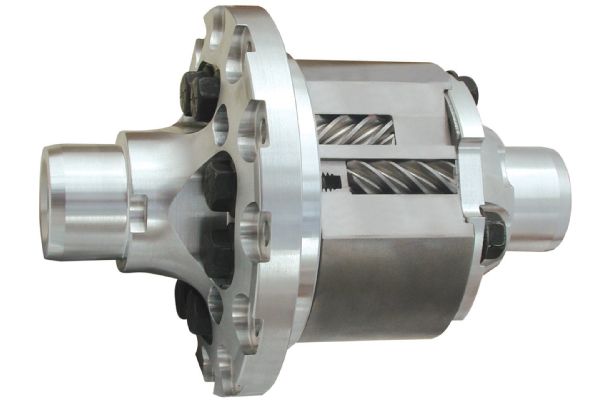
Chevy Long-Travel Traction
I have a ’11 Chevy 1500 regular-cab short-bed Z-71 4x4. The truck has a Rancho QuickLift and RS9000XL shocks out back. I have 33x12.50R17 Mickey Thompson MTZ tires on 17x9 Pro Comp Vapor Pro wheels. I'm looking to increase my suspension travel and need some advice. I'm going to be purchasing the Cognito ball joint upper control arms, which will give me an additional 2 inches of droop. Can I go with the Bilstein/Cognito 5100 strut, which, according to my thinking (which may be flawed), is that I'll gain just as much travel with these as I would with a coilover shock like Fox 2 1/2-inch or Sway-A-Way 2 1/2-inch shocks? Both shocks would be the models that require an upper control arm.
In the rear I plan to get Bilstein 5125 or 5165 shocks and need some advice there too. The 5125 has a compressed length of 15.91 inches which is the same as the RS9000s. The 5165 has a compressed length of 16.4 inches and offers 11-plus inches of travel. Would I need to lower my bumpstops to run these? I'm not expecting miracles out of this setup but would like 9 or 10 inches of wheel travel up front and as much droop as possible in back. I also plan to add a Deaver mini pack in the rear.
The type of wheeling I do is mostly dirt roads, forested two tracks, and rutted dirt trails and climbs. I also plan to replace the failure-prone factory Gov-Loc rear differential with a Detroit Truetrac, unless you recommend a true locker, which I'm not sure I need.
Michael Sidorick
Via email
Mixing and matching suspension components on the front of a GM IFS truck can be a sketchy proposition. The suspension and shocks are only two of the limiting factors for more wheel travel. If you let the suspension droop too far, you’ll exceed the plunge limit of the factory halfshafts. This will cause the CV boots to tear and in some cases the halfshafts will pull apart. I don’t recommend milking the front suspension for more wheel travel without using a well-thought-out, tested, and proven kit or combination of parts. If you decide to mix and match your own parts, you can temporarily remove the springs and cycle the suspension to check for binding. You may need to move bumpstops or add limiting straps to keep everything in check. While you are in there, it’s a good idea to upgrade the tie rods as well. Companies such as EMF (emfrodends.com) and JD Fabrication (jdfabrication.com) offer heavy-duty tie rod assemblies for other GM IFS trucks and may be able to manufacture what you need for your Chevy 1500.
Out back, the Bilstein (bilsteinus.com) 5165 shocks you want to use are only about a 1/2-inch longer (compressed) than the shocks you currently have. There should not be an issue. Just to be sure, safely raise the truck by the frame and check the rear driveshaft for binding at full suspension droop. Also, inspect the rear brake line and emergency brake cables to make sure they are not pulled tight. You can usually reroute the lines to get a little slack if needed.
In a stock application, the factory Gov-Loc works fairly well. However, it requires some differential wheel speed difference to engage and fully lock. Adding larger tires and driving semi-aggressively usually causes problems for this locker that often result in catastrophic failure. The Eaton (eaton.com) Detroit Truetrac is a great gear-driven limited slip for stock and moderately sized tires, but it will not exactly compare to the performance of the Gov-Loc, which is actually a true locking differential. If you need the traction performance of a true locker, consider the Detroit Locker or any of the selectable locking differentials available for your rear axle.